Peter Aitken

Fox News senior foreign affairs correspondent Greg Palkot reports from Ukraine, where there were 'dueling drones' overnight with Russia.
Ukraine has developed and implemented its own artificial intelligence (AI) platforms under the most stringent conditions to create something beyond what Western militaries have considered possible.
"The Ukrainians are doing a ton of stuff," Brett Velicovich, a Fox News contributor embedded in Ukraine, told Fox News Digital. "I mean, this innovation on the battlefield is out of this world right now. And, honestly, the U.S. government, Western governments, have no idea the innovation that's taking place.
"They can't keep up with it," he added. "The Ukrainians are moving too fast."
AI has quietly played a significant role in how Ukraine has managed to perform so well against a larger and seemingly stronger opponent in Russia, providing the smaller nation a wide range of advantages it might not otherwise have.
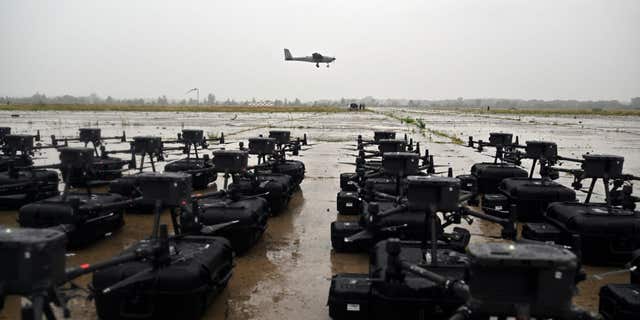
A UJ-22 Airborne (UkrJet) reconnaissance drone readies to land during a test flight in the Kyiv region Aug. 2, 2022. (Sergei Supinsky/AFP via Getty Images)
National Defense magazine called the Ukraine war an "unprecedented testing ground for AI," with the "now-ubiquitous employment of drones and loitering munitions by both sides" and "AI-enhanced autonomous capabilities in flight, targeting and firing."
George Dubynskiy, deputy minister of digital transformation in Ukraine, told Fox News Digital part of the key is the fact the country decided to create its own AI platform, which allowed engineers to tailor it to a specific use.
The ministry looked at ten AI platforms before deciding it would benefit more from an original one, which it started sometime around mid-year 2022 and deployed by the end of the year. Though Dubynskiy made clear the ministry is constantly working to improve and further develop it. The original platform also allowed Ukraine to use what data it needed without overstepping and sending the wrong kind of information to a commercial company.
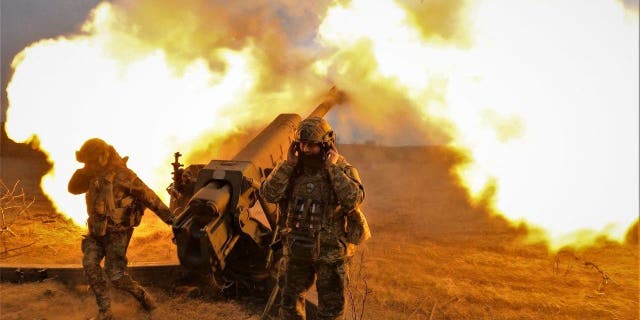
Ukrainian servicemen fire with a D-30 howitzer at Russian positions near Bakhmut, eastern Ukraine, March 21, 2023, amid the Russian invasion of Ukraine. (Sergey Shestak/AFP via Getty Images)
A Ukrainian engineer expert who referred to himself as "Max" and spoke alongside Dubynskiy discussed the immense network of closed-circuit television cameras and other monitoring infrastructure in the country that enabled the military to use computer vision extensively.
AI coverage has mainly focused on large language models and generative AI platforms such as Google’s Bard and OpenAI’s ChatGPT, but computer vision, which focuses on the interpretation and analysis of visual data through an AI platform, has shown great benefits to a wide range of industries and tasks.
Conservationists have used computer vision technology to track poachers and protect endangered species, while automated vehicle makers have looked at improving the technology to improve the performance of their trucks, cars and, one day, cargo ships, among other tasks.

Mykhailo Fedorov, deputy prime minister, minister of digital transformation of Ukraine, left, and Dmytro Zavhorodnii, director of the digital transformation directorate of the ministry of education and science of Ukraine, hold a presentation about Wi-Fi in a nationwide initiative aimed at providing kindergartens, schools, colleges and universities with high-speed Internet access in Kyiv, the capital of Ukraine. (Volodymyr Tarasov/Ukrinform/Future Publishing via Getty Images)
For Ukraine, it has helped the military track down men suspected of war crimes during Russia’s invasion and troop movements, thanks to the extensive use of unmanned aerial vehicles (UAV) and drones. With the footage captured, the AI can identify and categorize individual elements for users.
"The screenshots from Google Maps, from resistance forces in the occupied territories and the amount of messages was really too huge," Max explained. "We decided we need to automate this.
"We use now name and recognition and object character recognition (OCR)," he added. "We selected the GPS coordinates, location, date … we have a lot of data from different sources. Once they’ve started to attack Ukraine, we understood the best method to identify actually those Shahed drones and other general recognition."
The technology helped Ukrainian troops distinguish between Iranian-made Shahed 136 drones, known as the kamikaze drone, and standard missiles. The AI also helped improve the targeting and efficacy of guided-laser bombs.
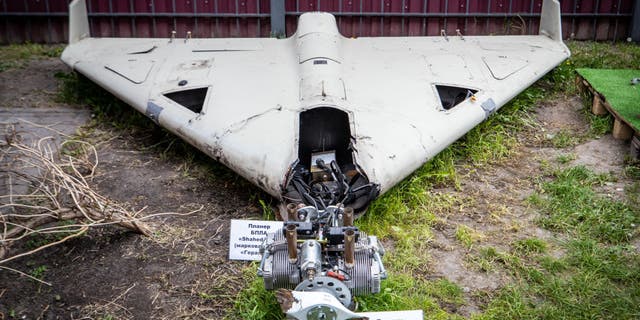
Remains of a Shahed 136 at an exhibition showing remains of missiles and drones that Russia used to attack Kyiv May 12, 2023, in Kyiv. (Oleksii Samsonov/Global Images Ukraine via Getty Images)
The most impressive feat that Ukraine accomplished through its AI development was the fact that the engineers did all of this on a fraction of the budget that American companies have used.
"They’re doing it for hundreds of dollars … they’re doing these things in their garage," Velicovich claimed. "They’ve got all these little — we call them gremlin garages — where it’s … they’re so technologically savvy.
"They know what they need immediately because they’re getting feedback and just building out all these kits, ripping out the cameras on the iPhones and attaching them to what’s called Raspberry Pie devices, which can create a designated targeting system."
Those factories developed through the help of some 250,000 participants of an "IT army" Ukraine pulled together when the war started, recruiting people who claimed to have some skills and were willing to help develop the technology and repair the equipment needed to wage the war and defend their homeland.
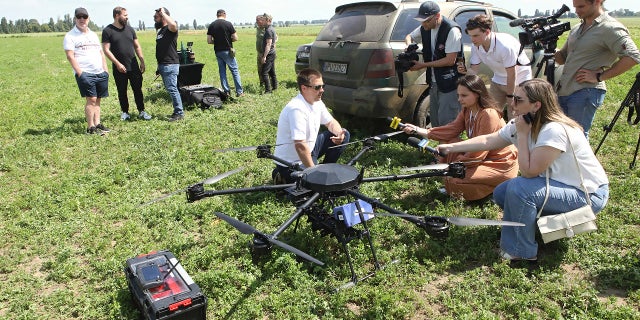
The Army of Drones announces the second stage of the UAV pilot training as 10,000 military personnel will learn how to fly the drones and will join the Defense Forces with new skills. (Volodymyr Tarasov/Ukrinform/Future Publishing via Getty Images)
Dubynskiy and Max described it as a need to learn "very, very fast" because you are "basically under the shelling" all the time.
"Ukrainian engineers are actually under attack, and they do their best to win this war, and it’s not the same … if we talk about Russian engineers. I think they try to avoid being connected to this war," Max said. "Only now we see in Russian Telegram channels that they are collecting the data."
When asked if Ukraine was in any way accessing Russian data sets to help train its platforms and improve capabilities, the deputy minister and Max merely said, "Let’s say we are doing our job successfully."
Ukraine remains in constant communication with "big companies and projects," but the deputy minister could not say which ones, only that they spoke with companies from the European Union and India to develop "particular" elements for their systems. But "it’s not that level of cooperation."
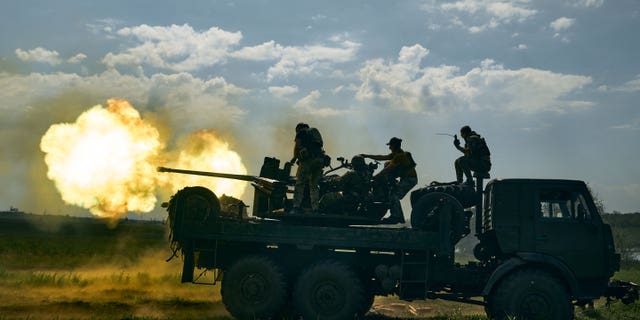
Ukrainian soldiers fire a cannon near Bakhmut, an eastern city where fierce battles against Russian forces have been taking place, in the Donetsk region, Ukraine, May 15, 2023. (AP Photo/Libkos, File)
"We can exchange some general information, some views. … We appreciate the help of big tech companies and some, you know, elements of the open code solution, which we can use, but it’s still not joint," Dubynskiy said, adding that Ukraine welcomed collaboration, particularly the inclusion of data for use in the platforms.
"Together with all of our partners, we can be more efficient, not only for our self-protection but also for the protection of the West."
Peter Aitken is a Fox News Digital reporter with a focus on national and global news.
No comments:
Post a Comment